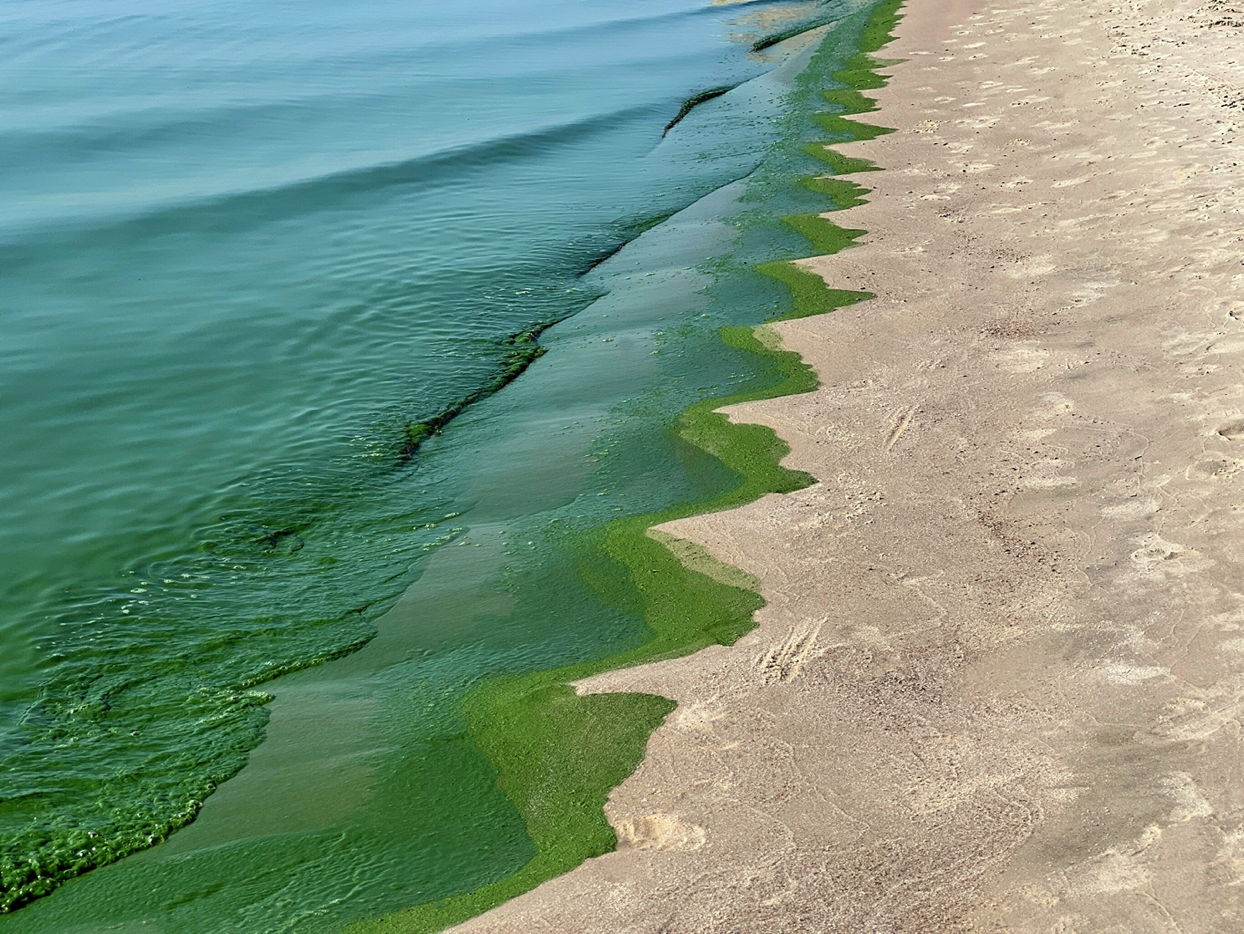uman activity is turning Earth into a world that may no longer adequately support the societies we’ve built, scientists warn in a new study charting whether and by how much we have surpassed nine “planetary boundaries.”
The analysis builds on a 2009 paper that first outlined nine planetary constraints that keep Earth’s environment similar to that of the world humans lived in during the preindustrial portion of the Holocene epoch. This period lasted for about the past 10,000 years, until the industrial revolution began and humans started burning large amounts of fossil fuels and sending heat-trapping greenhouse gases into the atmosphere. In the new research, published on Wednesday in Science Advances, researchers raise the alarm about what the potential consequences of this departure from humans’ baseline might be.
“It’s like blood pressure,” says Katherine Richardson, an earth systems scientist at the University of Copenhagen, who led the new research. “If your blood pressure is over 120 over 80, it’s not a guarantee that you’re going to have a heart attack, but it does raise the risk, and therefore we do what we can to bring it down.”
The new study marks the second update since the 2009 paper and the first time scientists have included numerical guideposts for each boundary—a very significant development. “What is novel about this paper is: it’s the first time that all nine boundaries have been quantified,” says Rak Kim, an environmental social scientist at Utrecht University in the Netherlands, who wasn’t involved in the new study.
Since its initial presentation, the planetary boundaries model has drawn praise for presenting the various intertwined factors—beyond climate change alone—that influence Earth’s habitability. Carbon dioxide levels are included in the framework, of course, but so are biodiversity loss, chemical pollution, changes in the use of land and fresh water and the presence of the crucial elements nitrogen and phosphorus. None of these boundaries stands in isolation; for example, land use changes can affect biodiversity, and carbon dioxide affects ocean acidification, among other connections.
“It’s very easy to think about: there are eight, nine boundaries—but I think it’s a challenge to explain to people how these things interact,” says political scientist Victor Galaz of the Stockholm Resilience Center, a joint initiative of Stockholm University and the Beijer Institute of Ecological Economics at the Royal Swedish Academy of Sciences, who focuses on climate governance and wasn’t involved in the new research. “You pull on one end, and actually you’re affecting something else. And I don’t think people really understand that.”
Although the nine overall factors themselves are the same as those first identified in the 2009 paper, researchers on the projects have fine-tuned some of these boundaries’ details. “This most recent iteration has done a very nice job of fleshing out more and more data—and, more and more quantitatively, where we sit with respect to those boundaries,” says Jonathan Foley, executive director of Project Drawdown, a nonprofit organization that develops roadmaps for climate solutions. Foley was a co-author on the original 2009 paper but was not involved in the new research.
Still, the overall verdict remains the same as it was nearly 15 years ago. “It’s pretty alarming: We’re living on a planet unlike anything any humans have seen before,” Foley says. (Humans are also struggling to meet the United Nations’ 17 Sustainable Development Goals, which are designed to address environmental and societal challenges, such as hunger and gender inequality, in tandem.)
The new research assesses the nine boundaries as follows.
Among the most concerning evaluations are the flows of phosphorus and nitrogen, which are both widely used as crop fertilizers and freely run out into ecosystems, wreaking havoc by, for example, triggering dangerous algal blooms. The researchers find that humans are releasing far more chemicals that contain these elements into the environment than the boundary limits the scientists calculated.
Another clearly violated boundary is climate change, which the researchers evaluated in two ways. First, they considered the atmospheric concentration of carbon dioxide, which is now at 417 parts per million (ppm), whereas scientists had previously estimated it was just 280 ppm before the industrial revolution. They identified the safe boundary limit as 350 ppm, which was surpassed in 1987. The scientists also considered radiative forcing, a measure of the balance of energy from sunlight that hits Earth, compared with thermal energy the planet loses. On both fronts, the team finds, we’re currently operating outside of recommended planetary boundaries.
But one of the key messages of the research is that the integrity of the living world is just as important as climate, despite the way climate dominates conversations about Earth’s future. “Every planet has a climate, for heaven’s sake—there’s nothing special about that,” Richardson says. “What’s special is having life.”
Richardson and her colleagues evaluated biosphere integrity on two fronts: genetic diversity and what they call “functional integrity.” For the former, they looked at the extinction rate as an approximation and conservatively estimated that the current extinction rate is about 100 times the background rate. And a newly considered factor in the current analysis is the total level of “primary production” (meaning photosynthesis) around the planet as an estimate of the functional integrity of ecosystems. The team established that primary production was relatively constant across the Holocene. Today, the researchers estimate, humans have co-opted about 30 percent of primary production for their own purposes—effectively through the food we harvest and eat. Before the industrial revolution, it was just 2 percent.
The fourth boundary, “novel entities,” represents the artificial chemicals that fill so much of modern life—such as plastics, dichlorodiphenyltrichloroethane (DDT), which dangerously thinned the eggshells of birds such as eagles, and perfluoroalkyl and polyfluoroalkyl substances (PFASs), “forever chemicals” that scientists have realized are nearly ubiquitous. For the first time, the scientists quantified this boundary, which they defined as releasing into the environment only chemicals that have been tested for safety. The current situation is far beyond that limit, Richardson notes: in the European Union alone, some 80 percent of human-made chemicals have been used without testing for more than a decade.
Another surpassed boundary involves land use. Specifically, the researchers quantified forest loss and researchers found that just 60 percent of once forested land remains as such. And they say 75 percent marks the edge of safety because of forests’ role in moderating our climate and keeping it human-friendly.
The boundary crossed since the previous version of this analysis is freshwater use, a category that now reflects changes in how the researchers approached this boundary. Earlier analyses looked only at what scientists call “blue water,” which includes surface water and groundwater. In the new assessment, the team also considered “green water,” which doesn’t enter aquifers but is still accessible to plants. Richardson says this is an important distinction. “I think it was right to change the metric, and the metrics that we now choose show that we’re on the wrong side,” she says. “I’ll be honest and say that if we’d used the old metrics, then we still wouldn’t have crossed it.”
The final three categories represent the areas where humans have not yet exceeded planetary boundaries as defined by the researchers: ocean acidification, atmospheric aerosol loading and ozone depletion. Only the last of these is trending in the right direction, thanks to the rare success of the Montreal Protocol, an international agreement. Under this pact, countries have reduced their use of ozone-depleting chemicals, allowing the protective ozone layer high in the atmosphere to recover.
Ever since the initial presentation of the planetary boundaries, researchers have debated not just these metrics’ details but also the merits of such a system as a whole. For Richardson, planetary boundaries are a way to easily understand how much humans are taking from Earth. “I see it very positively in the sense that it’s kind of a bank account, and understanding our relationship with the planet is power, and it gives us the possibility to develop sustainable societies,” she says. “Society needs something like this.”




